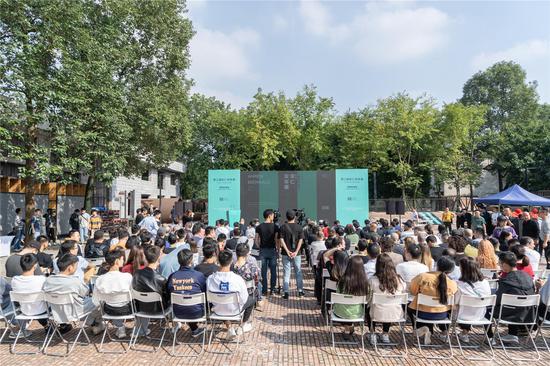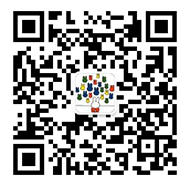 开幕式
开幕式共同的神话
Conflict of Ideals
[第二届安仁双年展]
主题阐释
Shared Mythology and the Conflict of Ideals:
The Second Anren Biennale
An Explanation of Themes
1405至1433年,明代三宝太监郑和带领中国船队航行,从南京出发至婆罗洲以西洋面(即所谓“西洋”),拜访了30多个国家和地区,其中包括爪哇、苏门答腊、苏禄、彭亨、真腊、古里、暹罗、榜葛剌、阿丹、天方、左法尔、忽鲁谟斯、木骨都束等地,最远到达东非、红海。From 1405 to 1433, during the first century of the Ming Dynasty, the Three Treasure Eunuch Zheng He commanded Chinese flotillas on a number of voyages from Nanjing to the western coast of the Indian Ocean。 On these epic journeys, the Chinese fleets visited more than thirty states, including those of Borneo, Java, Sumatra, the Philippines (Sulu), Malaya (Pahang), the Khmer, Kolkata, Siam, Bengal, Aden, Arabia, Somalia, Hormuz, and Mogadishu。 The farthest destinations were East Africa and the Red Sea。 这是15世纪末欧洲地理大发现的航行以前人类史上规模最大的一系列海上探险。根据记载,参与探险的一次船只最多达200多艘,船员达2.7万人,史称“郑和下西洋”(Zheng He‘s Voyages),无论当初的主要目的是不是建立稳固的朝贡体系,探索(不意味着是征服,因为明代的主要对外思想是“不征”,这一点上与欧洲的探险船队不同)更多的人类空间与世界互通有无无疑是下西洋的目的之一。These were the largest sequence of maritime expeditions in human history prior to the Age of Discovery of European mariners that began at the end of the fifteenth century。 According to records, one of “Zheng He’s voyages” comprised as many as two hundred ships and twenty-seven thousand mariners。 Whether or not the main purpose was to establish and consolidate a tributary system, exploration (rather than conquest, which was the main idea motivating European voyages) of previously unknown societies and the establishment of international exchanges were undoubtedly among the purposes of Zheng He’s expeditions to the “Western Ocean”。
在宝船航行六十一年后的1492年,德国航海家马丁·贝海姆((Martin Behaim))与一位画家的合作,制作出世界上第一个地球仪,即Erdapfel(德语),意思是“地球苹果”。这个地球仪由两个亚麻半球组成,外围用木头加固,合作画家用手绘制地图覆盖其上。 Sixty-one years after the last treasure ship of Zheng He set sail, in 1492, the German mariner Martin Behaim collaborated with a painter to produce the world’s first globe, which he named the Erdapfel, a German word meaning “the apple of the Earth”。 The globe comprised two hemispheres fashioned from linen, the periphery was reinforced with wood, and the cooperative artist hand-painted the maps that covered it。 尽管该地球仪因哥伦布尚未回西班牙不包括美洲,并且也有不准确的地方,例如日本(古语Cipango)画得比实际面积大并且位置往南偏离了不少,却构成了今天人们熟悉的地球概念:巨大的欧亚大陆、位于亚洲和欧洲之间的海洋以及圣布兰登岛。以后,欧洲人到达了亚洲,到达了中国和日本。人类进入了早期的全球化阶段。 Although this globe did not include the Americas, because Columbus has not yet returned to Spain, and there were inaccuracies, such as Japan (designated by the old name Cipango) being painted to appear much larger than its actual area and its location fixed much farther south than was the case, the globe conceptually embodied a map of the Earth largely as we know it today: the vast Eurasian continent, the oceans adjoining Asia and Europe, and even St。 Thomas Island。 Later, Europeans reached Asia and arrived in China and Japan, signaling mankind’s entry into the early stage of globalization。
从16世纪开始,葡萄牙人、荷兰人、西班牙人以及英国人陆续到达中国,到今天人类的网络全球化时代,人类的文化与不同的文明发生了目不暇接并深刻的变化,但是,这完全不意味着人类已经进入了一个大同的世界。 From the beginning of the sixteenth century, the Portuguese, Dutch, Spanish, and English have continuously arrived in China and, now, in today’s era of networked human globalization, different cultures and different civilizations have undergone dizzyingly profound changes, but this does not mean that mankind has yet entered a shared and integrated world。
第二届安仁双年展借用东西方两个历史的隐喻,来表达全球化时代当代艺术的主题:在复杂而充满戏剧性冲突的时代,在这个时代,不同文明对世界的观望、相互之间的对话以及交流该如何进行?The Second Anren Biennale draws on two historical metaphors regarding East and West to express the main themes of contemporary art in the age of globalization: In an era of complex and dramatic conflict, in which rival civilizations observe the world, how do we talk and communicate with each other? 更多的问题是,什么是全球化时代崭新的宝船,以致将亚洲和其他区域的人们带往地球他乡;而什么样的新的地球仪能够建立人类全新的视野,理解人类文明的昨天、今天和未来?人类如何来建立一个可以共同面对未来挑战的文明共同体?Further questions are: What do the new treasure ships in the era of globalization bring from the people of Asia to other regions of the world? And what new kind of globe can embody a new vision of humanity and an understanding of the past, present and future of human civilization? How can humanity build a shared community of civilizations that can face the challenges of the future together?
上个世纪90年代,亨廷顿已经意识到了不同文明之间的问题:
由于现代化的激励,全球政治正沿着文化的界线重构。文化相似的民族和国家走到一起,文化不同的民族和国家则分道扬镳。以意识形态和超级大国关系确定的结盟让位于以文化和文明确定的结盟,重新划分的政治界线越来越与种族、宗教、文明等文化的界线趋于一致,文化共同体正在取代冷战阵营,文明间的断层线正在成为全球政治冲突的中心界线。”(P.129)
In the 1990s, Samuel Huntington was aware of the problems that exist between different civilizations。 He argued that as a result of modern challenges, global politics is being reconstructed along the boundaries of culture。 Peoples and countries with similar cultures come together, while peoples and countries with different cultures part ways。 Alliances based on ideological and superpower relations will give way to alliances based on culture and civilization, and the redrawing of political boundaries is increasingly converging with the boundaries of culture such as race, religion, and civilization, which is replacing the Cold War camps, and the fault lines between civilizations are becoming the central boundaries in global political conflict。
众所周知,这个世界没有任何一个时期像今天这样充满复杂性,作为基因单一永不重复的生命个体,生活在不同国家、地区和文化背景下的艺术家对世界的看法和表达呈现出必须通过不断对话的方式才能够沟通和理解的差异程度。As we all know, no period in world history was as complex as today and, as genetically unique and non-recurring living individuals, artists living in different national, regional, and cultural contexts necessarily perceive and express the world with differences in communication and understanding that must be elucidated through constant dialogue。
艺术家的敏感性和艺术思想的丰富性是本届双年展要呈现的面貌,尤其是在世界的格局正在发生深刻变化的时候,艺术的声音会显得特别具有感染力和启发性。基于历史的教训,艺术对未来经常表现出有价值的预言。The sensitivity of artists and the richness of artistic ideas form the faces to be presented at this Biennale and, especially at a time when the world’s pattern is undergoing profound change, the voices of art will appear particularly influential and enlightening。 Based on the lessons of history, art often makes valuable prophecies about the future。 亨廷顿提醒:多文化的世界是在冷战结束之后出现的,而之前,世界大致是由以美国为首的西方国家和以苏联为首的社会主义国家以及被认为是贫困而缺乏稳定性的“第三世界”构成的。Huntington pointed out: A multicultural world emerged after the end of the Cold War, whereas previously the world had been largely comprised of Western countries led by the United States, socialist countries led by the Soviet Union, as well as a “Third World” which was considered poor and lacking in stability。 这当然不是说,不同国家和地区的历史与文化沟通才开始出现,而是,在之前相当长的一段时间里,各个国家、民族的历史和文化之间的差异被意识形态的冲突所涵盖,没有充分呈现出来。冷战结束之后,不同文明背景的人们开始将文化与身份问题提上议事日程:我们是谁?我们究竟来自哪里?我们将向何处去? This is certainly not to say that historical and cultural communications between different countries and regions had only just begun, but that for a considerable period of time previously the differences between the histories and cultures of various countries and nationalities were shrouded by ideological conflict and not fully presented。 After the end of the Cold War, people of different background civilizations began to place issues of culture and identity on the agenda: Who are we? Where are we ultimately from? Where are we going? 于是,祖先、传统、语言、宗教、历史、习俗这类概念下的问题开始凸显;文化的偏好、共性以及差异问题开始凸显。基于世界的变化,文化开始成为更有效的政治策略与沟通工具。文化的组织能力和结构能力经常超越意识形态,文化的冲突也往往突破意识形态的一致性。As a result, conceptual issues of ancestry, tradition, language, religion, history, and customs began to emerge; cultural preferences, commonalities, and differences also began to emerge。 Based on the changes in the world, culture is beginning to become a more effective political strategy and communication tool。 The organizational and structural abilities of culture often transcend ideology, and cultural conflicts often break through the consistency of ideology。 安仁双年展的基本策略是:通过艺术家的个人观察,以及他们与观众之间的对话,为这个复杂而多样的世界提供观察与分析的可能,通过美学的角度,去模拟人类文化交流中凸显的各种有趣的问题。 The basic strategy of the Anren Biennale is to provide the opportunity to observe and analyze this complex and diverse world through the artist’s personal observation, as well as to enter into their dialogue with the audience, and to simulate the various interesting issues highlighted in human cultural exchanges through an aesthetic perspective。
文明之间的冲突基于文化的差异,那么,从文化上去寻找沟通的可能性,进而去修改人类在文明基础上完成的制度、经济利益甚至国家利益,也许是有可能性的。从生物和哲学层面上看,冲突不可避免,同样,相互联系、影响甚至改变也是基本的文明事实。无论文明的种类是多是少,一层不变的文明从古至今都是没有的。这就使我们寻找并提交新的文明范式有了可能性。The conflict between civilizations is based on cultural differences, so it is possible to communicate through culture and then modify the systems, economic interests and even national interests that humans have built on the basis of civilization。 From a biological and philosophical point of view, conflict is inevitable, but inter-connectedness, mutual influence and even change are also all basic facts of civilization。 Regardless of the type of civilization, from ancient times to the present there has never been a civilization that is unchanging。 This makes it possible for us to find and present new paradigms of civilization。
技术革命、政治安排、法治建设以及规则的制定,是国际社会国家之间建立共同体的基本保障。所谓共同体,是一个和谐至善的承诺,这是人类依赖其发展所需的生命个体的要求,然而,不同的国家拥有不同的民族、宗教信仰、文化传统与习俗甚至不同的人种,概括地说,不同的国家文明背景具有明显的差异,Technological revolutions, political arrangements, the construction of the rule of law, and the formulation of rules are the basic guarantees for the establishment of a community among the various countries that make up the international community。 Community itself is a promise of harmony and goodness, which human beings require to build the individual life they require for their development。 However, different countries have different ethnicities, religious beliefs, cultural traditions, customs, and even races; in a nutshell, different national civilized backgrounds have obvious differences。 同时,不同国家的利益与操作集团的特殊目的和策略上的问题,使得建立共同体变得十分的困难,因此,在具体的政治与经济规则的制定的同时,利用价值观的讨论、文化的交流、人类伦理的商议以及艺术盲点的试错,也许是我们建立文明共同体的机会所在。由于文明或者文化的传统和留存的事实,我们可以在尊重不同文明的历史和传统的基础上,讨论如何来塑造适合人类共同体的全球化时代的新文明。At the same time, the question of the special purposes and strategies of the interests and operating groups of different countries makes it very difficult to establish a shared community and so at the same time as we formulate specific political and economic rules, we may have the opportunity to establish a civilized community by taking advantage of our discussion of values and our cultural exchanges to negotiate human ethics and indulge in the trial and error of artistic blind spots。 Because of the existence of traditions and residues of civilization or culture, we can discuss how to shape a new civilization in an era of globalization suited to the human community, on the basis of respect for the history and traditions of different civilizations。
“共同的神话”意味着建立人类文明共同体的理想、问题与努力!
“Shared mythology” signifies the ideals, questions, and efforts required to establish a human civilized community。
吕 澎
2019年4月17日星期三
Lv Peng
Wednesday, 17th April 2019
Shared Mythology and the Conflict of Ideals:
The Second Anren Biennale
An Explanation of Themes
From 1405 to 1433, during the first century of the Ming Dynasty, the Three Treasure Eunuch Zheng He commanded Chinese flotillas on a number of voyages from Nanjing to the western coast of the Indian Ocean。 On these epic journeys, the Chinese fleets visited more than thirty states, including those of Borneo, Java, Sumatra, the Philippines (Sulu), Malaya (Pahang), the Khmer, Kolkata, Siam, Bengal, Aden, Arabia, Somalia, Hormuz, and Mogadishu。 The farthest destinations were East Africa and the Red Sea。 These were the largest sequence of maritime expeditions in human history prior to the Age of Discovery of European mariners that began at the end of the fifteenth century。 According to records, one of “Zheng He’s voyages” comprised as many as two hundred ships and twenty-seven thousand mariners。 Whether or not the main purpose was to establish and consolidate a tributary system, exploration (rather than conquest, which was the main idea motivating European voyages) of previously unknown societies and the establishment of international exchanges were undoubtedly among the purposes of Zheng He’s expeditions to the “Western Ocean”。
Sixty-one years after the last treasure ship of Zheng He set sail, in 1492, the German mariner Martin Behaim collaborated with a painter to produce the world’s first globe, which he named the Erdapfel, a German word meaning “the apple of the Earth”。 The globe comprised two hemispheres fashioned from linen, the periphery was reinforced with wood, and the cooperative artist hand-painted the maps that covered it。 Although this globe did not include the Americas, because Columbus has not yet returned to Spain, and there were inaccuracies, such as Japan (designated by the old name Cipango) being painted to appear much larger than its actual area and its location fixed much farther south than was the case, the globe conceptually embodied a map of the Earth largely as we know it today: the vast Eurasian continent, the oceans adjoining Asia and Europe, and even St。 Thomas Island。 Later, Europeans reached Asia and arrived in China and Japan, signaling mankind’s entry into the early stage of globalization。
From the beginning of the sixteenth century, the Portuguese, Dutch, Spanish, and English have continuously arrived in China and, now, in today’s era of networked human globalization, different cultures and different civilizations have undergone dizzyingly profound changes, but this does not mean that mankind has yet entered a shared and integrated world。
The Second Anren Biennale draws on two historical metaphors regarding East and West to express the main themes of contemporary art in the age of globalization: In an era of complex and dramatic conflict, in which rival civilizations observe the world, how do we talk and communicate with each other? Further questions are: What do the new treasure ships in the era of globalization bring from the people of Asia to other regions of the world? And what new kind of globe can embody a new vision of humanity and an understanding of the past, present and future of human civilization? How can humanity build a shared community of civilizations that can face the challenges of the future together?
In the 1990s, Samuel Huntington was aware of the problems that exist between different civilizations。 He argued that as a result of modern challenges, global politics is being reconstructed along the boundaries of culture。 Peoples and countries with similar cultures come together, while peoples and countries with different cultures part ways。 Alliances based on ideological and superpower relations will give way to alliances based on culture and civilization, and the redrawing of political boundaries is increasingly converging with the boundaries of culture such as race, religion, and civilization, which is replacing the Cold War camps, and the fault lines between civilizations are becoming the central boundaries in global political conflict。
As we all know, no period in world history was as complex as today and, as genetically unique and non-recurring living individuals, artists living in different national, regional, and cultural contexts necessarily perceive and express the world with differences in communication and understanding that must be elucidated through constant dialogue。
The sensitivity of artists and the richness of artistic ideas form the faces to be presented at this Biennale and, especially at a time when the world’s pattern is undergoing profound change, the voices of art will appear particularly influential and enlightening。 Based on the lessons of history, art often makes valuable prophecies about the future。 Huntington pointed out: A multicultural world emerged after the end of the Cold War, whereas previously the world had been largely comprised of Western countries led by the United States, socialist countries led by the Soviet Union, as well as a “Third World” which was considered poor and lacking in stability。 This is certainly not to say that historical and cultural communications between different countries and regions had only just begun, but that for a considerable period of time previously the differences between the histories and cultures of various countries and nationalities were shrouded by ideological conflict and not fully presented。 After the end of the Cold War, people of different background civilizations began to place issues of culture and identity on the agenda: Who are we? Where are we ultimately from? Where are we going? As a result, conceptual issues of ancestry, tradition, language, religion, history, and customs began to emerge; cultural preferences, commonalities, and differences also began to emerge。 Based on the changes in the world, culture is beginning to become a more effective political strategy and communication tool。 The organizational and structural abilities of culture often transcend ideology, and cultural conflicts often break through the consistency of ideology。 The basic strategy of the Anren Biennale is to provide the opportunity to observe and analyze this complex and diverse world through the artist’s personal observation, as well as to enter into their dialogue with the audience, and to simulate the various interesting issues highlighted in human cultural exchanges through an aesthetic perspective。
The conflict between civilizations is based on cultural differences, so it is possible to communicate through culture and then modify the systems, economic interests and even national interests that humans have built on the basis of civilization。 From a biological and philosophical point of view, conflict is inevitable, but inter-connectedness, mutual influence and even change are also all basic facts of civilization。 Regardless of the type of civilization, from ancient times to the present there has never been a civilization that is unchanging。 This makes it possible for us to find and present new paradigms of civilization。
Technological revolutions, political arrangements, the construction of the rule of law, and the formulation of rules are the basic guarantees for the establishment of a community among the various countries that make up the international community。 Community itself is a promise of harmony and goodness, which human beings require to build the individual life they require for their development。 However, different countries have different ethnicities, religious beliefs, cultural traditions, customs, and even races; in a nutshell, different national civilized backgrounds have obvious differences。 At the same time, the question of the special purposes and strategies of the interests and operating groups of different countries makes it very difficult to establish a shared community and so at the same time as we formulate specific political and economic rules, we may have the opportunity to establish a civilized community by taking advantage of our discussion of values and our cultural exchanges to negotiate human ethics and indulge in the trial and error of artistic blind spots。 Because of the existence of traditions and residues of civilization or culture, we can discuss how to shape a new civilization in an era of globalization suited to the human community, on the basis of respect for the history and traditions of different civilizations。
“Shared mythology” signifies the ideals, questions, and efforts required to establish a human civilized community!
Lv Peng
Wednesday, 17th April 2019




